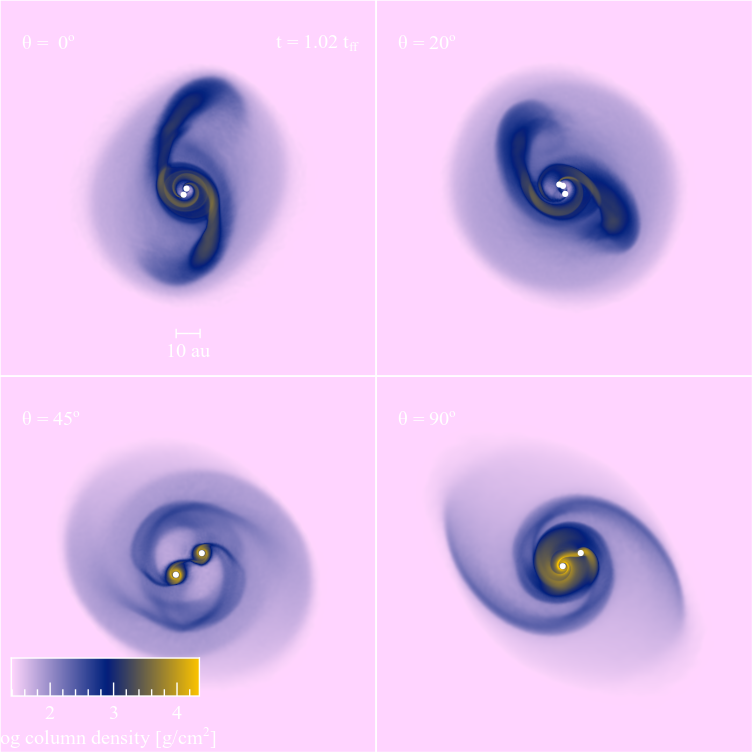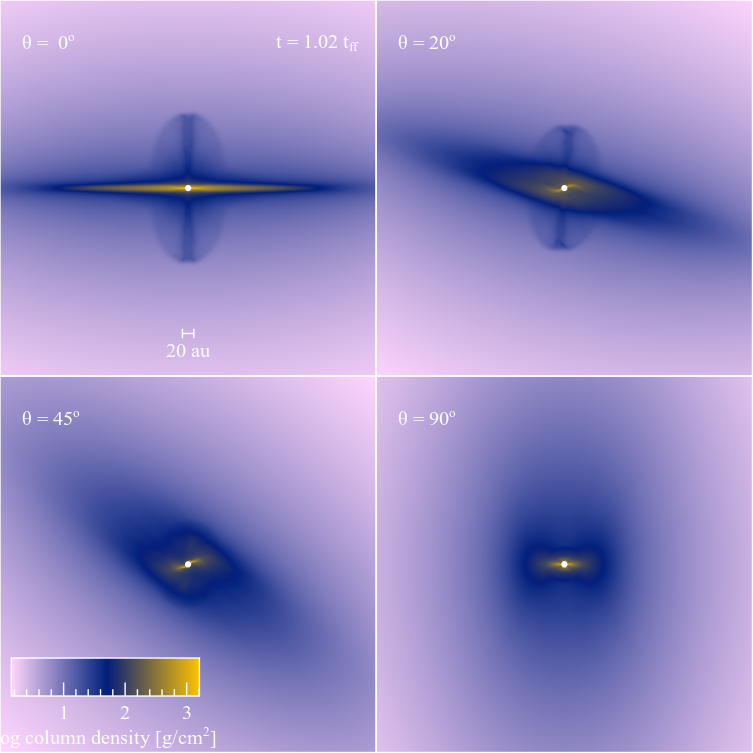The dependence of protostar formation on the geometry and strength of the initial magnetic fieldSummaryThis paper builds upon and supersedes Lewis, Bate and Price (2015). We now consider both the effects of changing the magnetic field geometry and the strength of the initial field on the formation of the resulting protostar - or protostars. The novel results here include that in some intermediate field strength cases (e.g. μ = 10, ϑ = 0°) the jet velocity can be higher than the corresponding strong field (μ = 5) situation. This is caused by a reduction in magnetic braking in the disc, and since disc velocity and maximum outflow velocity are inextricably linked, this actually operates to increase the jet velocity. We also find that a field sufficently weak to switch off the jet is unstable to gravitational-rotational fragmentation. So the fastest outflows from around first hydrostatic cores may actually originate in intermediate field strength situations, and at least in principle weak magnetic fields are conducive the formation of binaries without the multiple fragmentations seen for purely hydrodynamic calculations. Formal Abstract and Publication DetailsWe report results from twelve simulations of the collapse of a molecular cloud core to form one or more protostars, comprising three field strengths (mass–to–flux ratios, μ, of 5, 10, and 20) and four field geometries (with values of the angle between the field and rotation axes, ϑ, of 0°, 20°, 45°, and 90°), using a smoothed particle magnetohydrodynamics method. We find that the values of both parameters have a strong effect on the resultant protostellar system and outflows. This ranges from the formation of binary systems when μ = 20 to strikingly differing outflow structures for differing values of ϑ, particular highly suppressed outflows when ϑ = 90°. Misaligned magnetic fields can also produce warped pseudo-discs where the outer regions align perpendicular to the magnetic field but the innermost region re–orientates to be perpendicular to the rotation axis. We follow the collapse to sizes comparable to those of first cores and find that none of the outflow speeds exceed 8 km s−1 . These results may place constraints on both observed protostellar outflows, and also on which molecular cloud cores may eventually form either single stars and binaries: a sufficiently weak magnetic field may allow for disc fragmentation, whilst conversely the greater angular momentum transport of a strong field may inhibit disc fragmentation. Accepted for publication in MNRAS. E-print available on the arXiv as arXiv:1701.08741 and bibliographic data on the ADS. The dataset used to produce the paper is available in ORE. Animations and Images In this animation we show the time evolution for the μ = 20 calculations, showing the formation of binary and ternary systems as the pseudo-disc becomes unstable to gravitational-rotational torques. MP4 file (752x752 pixels, 140 KB)  In this animation we show the time evolution for the μ = 5 calculations, showing how changing the field geometry changes the nature of the outflow and jet. MP4 file (752x752 pixels, 512 KB) CopyrightThe animations and images on this page are © 2015, 2016, & 2017 Benjamin T. Lewis and Matthew R. Bate and are made available under a Creative Commons Attribution-NonCommercial-ShareAlike (2.0 UK: England & Wales) license. |
